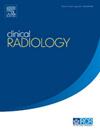评估人工智能检测和分级冠状动脉钙化在非ated计算机断层扫描(CT)胸部的诊断准确性和预后效用
IF 2.1
3区 医学
Q2 RADIOLOGY, NUCLEAR MEDICINE & MEDICAL IMAGING
引用次数: 0
摘要
目的:本研究评估了人工智能(AI)工具在非定量、非对比胸部计算机断层扫描(CT)上对冠状动脉钙化(CAC)的诊断准确性和预后意义。材料与方法对2015年1月至12月接受非门控、非对比CT检查的各年龄组(40岁、40-49岁、50-59岁、60-69岁、70-79岁、80-89岁和≥90岁)连续75例患者进行单中心回顾性分析。人工智能分析报告CAC存在并生成Agatston评分,并将表现与基线CT报告和专门的放射科医生重新审查进行比较。人工智能和放射科医生评估之间的观察者间变异性使用Cohen’s κ来测量。记录全因死亡率,并检验其与人工智能检测到的CAC的相关性。结果共纳入291例患者(平均年龄64±19岁,女性占51%),其中80%(234/291)的AI报告通过放射科医师质量评估。首次临床报告中有7%(17/234)报告了CAC,放射科医生复查报告中有58%(135/234)报告了CAC,人工智能分析报告中有57%(134/234)报告了CAC。经过人工质量保证(QA)评估,与放射科医生复查相比,人工智能工具在CAC检测方面表现出高灵敏度(96%)、特异性(96%)、阳性预测值(95%)和阴性预测值(97%)。观察者间对CAC患病率的一致性很强(κ = 0.92),对严重程度分级的一致性中等(κ = 0.60)。人工智能检测CAC存在和严重程度预测全因死亡率(p <;0.001)。结论人工智能工具在非造影剂、非门控胸部ct上显示出可行的分析潜力,如果整合到常规实践中,可以提供预后见解。尽管如此,手工质量评估仍然是必不可少的。该人工智能工具对常规非心脏胸部CT的CAC检测和报告具有潜在的增强作用。本文章由计算机程序翻译,如有差异,请以英文原文为准。
Assessing the diagnostic accuracy and prognostic utility of artificial intelligence detection and grading of coronary artery calcification on nongated computed tomography (CT) thorax
Aims
This study assessed the diagnostic accuracy and prognostic implications of an artificial intelligence (AI) tool for coronary artery calcification (CAC) assessment on nongated, noncontrast thoracic computed tomography (CT).
Materials and Methods
A single-centre retrospective analysis of 75 consecutive patients per age group (<40, 40-49, 50-59, 60-69, 70-79, 80-89, and ≥90 years) undergoing non-gated, non-contrast CT (January-December 2015) was conducted. AI analysis reported CAC presence and generated an Agatston score, and the performance was compared with baseline CT reports and a dedicated radiologist re-review. Interobserver variability between AI and radiologist assessments was measured using Cohen's κ. All-cause mortality was recorded, and its association with AI-detected CAC was tested.
Results
A total of 291 patients (mean age: 64 ± 19, 51% female) were included, with 80% (234/291) of AI reports passing radiologist quality assessment. CAC was reported on 7% (17/234) of initial clinical reports, 58% (135/234) on radiologist re-review, and 57% (134/234) by AI analysis. After manual quality assurance (QA) assessment, the AI tool demonstrated high sensitivity (96%), specificity (96%), positive predictive value (95%), and negative predictive value (97%) for CAC detection compared with radiologist re-review. Interobserver agreement was strong for CAC prevalence (κ = 0.92) and moderate for severity grading (κ = 0.60). AI-detected CAC presence and severity predicted all-cause mortality (p < 0.001).
Conclusion
The AI tool exhibited feasible analysis potential for non-contrast, non-gated thoracic CTs, offering prognostic insights if integrated into routine practice. Nonetheless, manual quality assessment remains essential.
Advances in knowledge
This AI tool represents a potential enhancement to CAC detection and reporting on routine noncardiac chest CT.
求助全文
通过发布文献求助,成功后即可免费获取论文全文。
去求助
来源期刊

Clinical radiology
医学-核医学
CiteScore
4.70
自引率
3.80%
发文量
528
审稿时长
76 days
期刊介绍:
Clinical Radiology is published by Elsevier on behalf of The Royal College of Radiologists. Clinical Radiology is an International Journal bringing you original research, editorials and review articles on all aspects of diagnostic imaging, including:
• Computed tomography
• Magnetic resonance imaging
• Ultrasonography
• Digital radiology
• Interventional radiology
• Radiography
• Nuclear medicine
Papers on radiological protection, quality assurance, audit in radiology and matters relating to radiological training and education are also included. In addition, each issue contains correspondence, book reviews and notices of forthcoming events.
 求助内容:
求助内容: 应助结果提醒方式:
应助结果提醒方式:


